The idea of life on
Mars has been the subject of
science fiction for decades. While no direct
evidence exists that life ever existed on
Mars, the
idea of liquid water is the Martian past allows for
that possibility.Prior to the
Mars Exploration
Rovers, the closest evidence we had of past life is
the
Alan Hills 84001 meteorite.

Based on chemical composition, this
meteorite is known to have its origins from
Mars.
What prompted excitement with possible life was
close (very close) examination of this
meteorite:
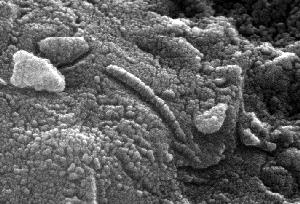
To many, the image above is
undeniable proof that at least bacterial life forms
existed on
Mars in the distant past. But this image
is not without controversy. Two main pieces of
evidence against this image:
A good unbiased article on ALH84001
can be found at
SpaceRef.com.
Of course the biggest buzz regarding
Mars is the
Mars Exploration Rovers: Spirit and
Opportunity. These two probes have demonstrated
unparallel success as they have far exceeded
expectations regarding operation and data
collection. While the data collected by these two
probes is enormous and will required decades of
interpretation, the result so far is that:
Liquid water has existed on the
surface of
Mars.
As far as how long ago is still a
question that needs an answer.
Images from recent
Mars
missions:
The first suggestion of water
evidence is a rock called Escher. Based on comparing
geography with
Earth, this type of formation can
only occur when the surface was wet, then dried:

This image below demonstrates
geographical formation that could only occur as a
result of shaping by liquid:
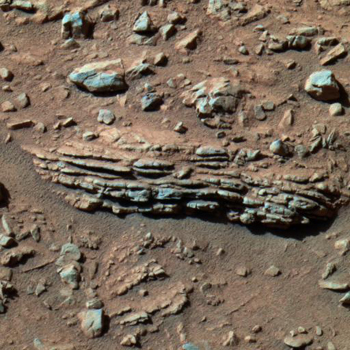
A mineral called
magnetite is know to occur in only wet
environments, and these "berries" are a footprint of
magnetite formation:

Another bit of water evidence is the
presence of another water forming mineral called
goethite:
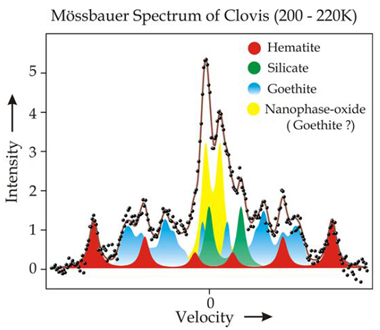
In order to determine composition,
Astronomers use a variety of filters. The image
below shows the basic composite of materials in
Endurance Crater:
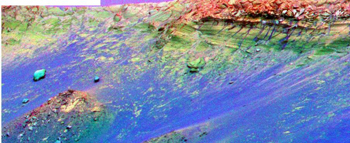
We will close out this section on
Mars with one of my favorite images:
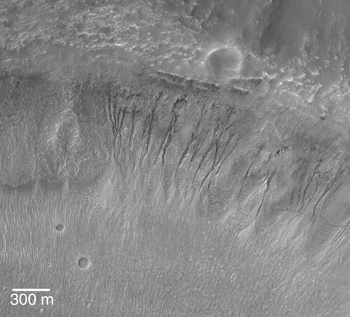
This image is from the
Mars Global Surveyor, and shows what looks like
gullies - like those of which formed by liquid
water. The two circles on the lower right are recent
(within a few thousands of years) meteorite impacts.
Back to Top |

